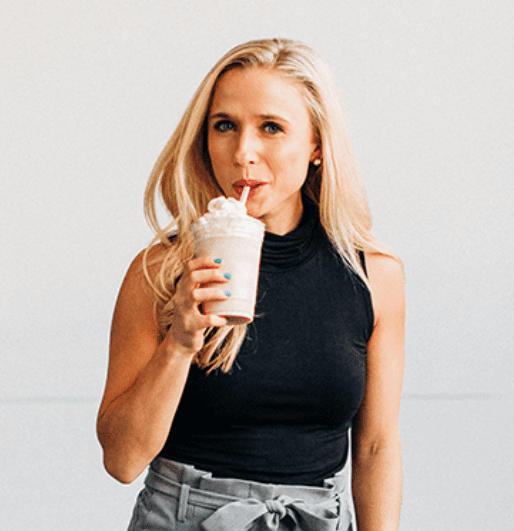It can be easy to think we need rules around food, especially sweets, to help us pursue health. But is it necessary? Research is showing that people who do not follow diet rules and eat intuitively actually have an impressive array of health measures such as lower cardiovascular risk, decreased triglyceride levels, and less rates of disordered eating. This blog post will dive into how it’s possible to enjoy all foods, including sweets, without guilt and still pursue health!
Intuitive eaters eat a variety of foods
Intuitive Eating is a self-care eating framework with 10 guiding principles centered around three core characteristics: eating for physical rather than emotional reasons, relying on internal hunger and satiety cues, and giving yourself unconditional permission to eat with attunement. Check out this blog post to learn more about Intuitive Eating.
A common concern critics have about intuitive eating is the fear that with unconditional permission to eat, people would likely gravitate towards foods society labels as “bad” or “junk” like ice cream, chips, and soda. This fear makes sense logically, partly because there are thousands of diet programs selling plans telling you what foods to eat and what foods to avoid.
Yet, when we look at intuitive eaters we find the Permission Paradox – we don’t see unconditional permission to eat resulting in consumption of only “bad” foods. Research done in college-aged students illustrates this paradox well. To evaluate the health properties of food choices made by those that were intuitive eaters, researchers looked at almost 350 male and female college students. What they found was that students who scored higher as intuitive eaters ate a more diverse diet! Higher intuitive eating scores were also associated with greater pleasure in eating and fewer food anxieties, but not associated with amount of “junk” food eaten.
Intuitive eaters enjoy their sweets mindfully
Sweets don’t taste as good with a side of guilt. To avoid this, intuitive eaters shift the language around food to be neutral instead of calling sweets “bad”, a “guilty pleasure,” or “sinful” intuitive eaters shift the language around food to be more neutral. Engaging your senses while eating your favorite sweets and observing them with a lens of curiosity instead judgement can help with this. Notice how your food looks, smells, feels, and tastes when you eat it. Notice how the pleasantness of eating changes over time as you continue to eat your food of choice.
A key component of Intuitive Eating is turning inward and allowing your internal body cues to guide your food choices and how much food feels good to you. This mindful eating practice allows you to consciously connect with the eating experience instead of listening to external diet rules such as calorie counting which decrease body trust.
Intuitive eaters assess for all or nothing mentality
It’s possible to enjoy sugar and eat a varied diet full of foods like fruits, vegetables, whole grains, and lean meats. Your relationship with food doesn’t have to be one extreme or the other, such as only eating sweets or only eating foods you label as “healthy.” Breaking free of binary thinking like this can help you escape these extremes and find a middle ground that feels good, nourishes you and helps you take care of yourself physically, mentally, and emotionally.
References:
1. https://pubmed.ncbi.nlm.nih.gov/26162949/
T.L. Tylka et al., “Is Intuitive Eating the Same as Flexible Dietary Control? Their Links to Each Other and Well-Being Could Provide an Answer,” Appetite 95 (December 2015)
2. https://www.tandfonline.com/doi/abs/10.1080/19325037.2006.10598892
Smith, T. and Hawks, S. Intuitive Eating, Diet Composition, and the Meaning of Food in Healthy Weight Promotion. Am J Health Educ (May/June 2006):130-134




Get Social with #MoreToSugar